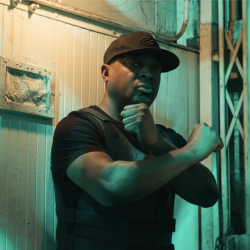|
Can You Dig It?: The Full Story
Are you ready for the greatest American story you’ve probably never heard?
The Bronx, 1971. The story of South Bronx gang the Ghetto Brothers and their evolution from street gang to peacemakers - and from peacemakers to enablers of Hip-Hop culture - reads like a fairytale…or at least a fictional Hollywood script. But it’s all true. These ambitious, courageous and visionary young men are unsung heroes in the history of Hip-Hop…until now.
The nation was at war overseas and at home. New York City was under siege: dis-investment, urban planning, crime, poverty, oppression…and to the youth of these communities, gang-life was the only light in a very dark tunnel. In a city of territorial disputes and gang warfare, chaos reigned supreme - hundreds of gangs with over 11,000 of city youth in their ranks, ruled the night…all this, just 80 blocks north of Tiffany's.
But amidst the flames and unrest rose a gang that dared to think differently: the Ghetto Brothers. They were one of the largest and most-feared gangs, but they also operated outside of the normal confines of street life: why fight each other, when they should band-together against the system that oppresses them? The Ghetto Brothers had a higher calling: to be a beacon of hope for their community. But they knew that change had to come from within. So, they decided to do something radical: they transformed their position of “Warlord” into something far more impactful: “the Peacemaker”!
But, on his very first assignment to de-escalate tension with rival gangs, Ghetto Brother “Peacemaker" “Black Benjie”...was brutally murdered. Now, Ghetto Brother President “Yellow Benjy” weighed the biggest decision of his life: avenge his brothers’ death or break the cycle of violence, by opting for peace.
The Ghetto Brothers’ decision would be guided by three critical influences from within their community: art teacher and youth-advocate/mentor, Rita Fecher; community-activist and supporter, Evelina Antonetty; and Joseph Mpa and the Black Panther Party. Spoiler alert: the positive influences made a lasting impression.
A week later, over 50 gangs from the New York area agreed to meet peacefully at the Boys Club on Hoe Ave in the Bronx, where Yellow Benjy and the Ghetto Brothers offered a truce to put down their weapons against each other, and work together to make their community better. This became known as the Hoe Ave Peace Treaty of 1971, and has a direct correlation to the birth of Hip-Hop.
The peace treaty dismantled turf wars, allowing for people to socially come together in new and exciting ways; allowing for the spreading and sharing of ideas, cultures, artforms and visions; allowing for social gatherings…like the party that happened on August 11, 1973 at 1520 Sedgewick Ave in the Bronx.
One of the key uniquities of Can You Dig It? is the unfettered and unprecedented access to our interviewees, including Joseph Mpa, the former-Black Panther who is credited with the Warlord-to-Peacemaker concept; as well as ‘Black Benjie’s brother and niece, who speak on-record, for the 1st time ever. The scripted sequences also help bring to life and bridge together the critical story peaks in a cinematic and immersive way, like a movie for your ears.
The title “Can You Dig It?” is from a pivotal scene of the 1979 cult movie, The Warriors- a film that was inspired by the true events in our story.
Can You Dig It? was proudly made in New York City and produced with a focus on representation, authenticity and accuracy. The goal of Can You Dig It? is to ensure that The Ghetto Brothers, Yellow Benjy and Black Benjie’s names are securely etched into the origin story of Hip-Hop.
|

